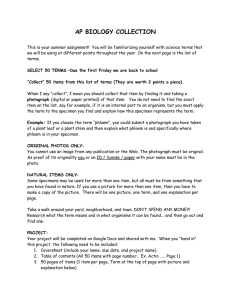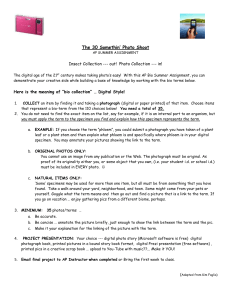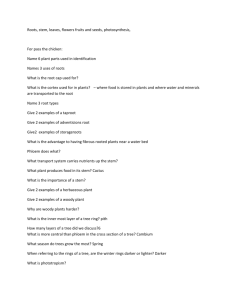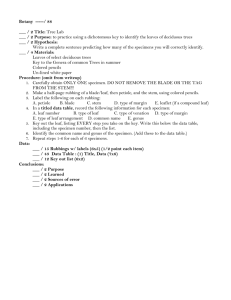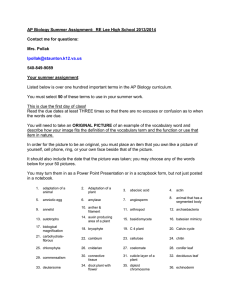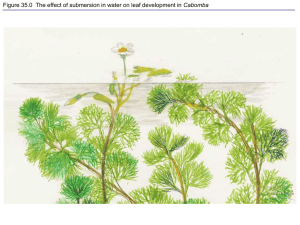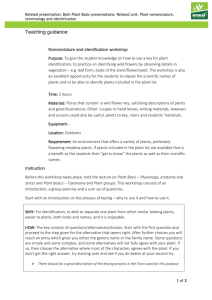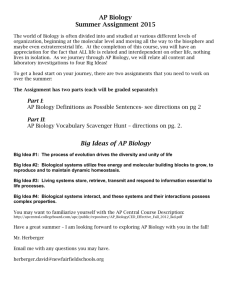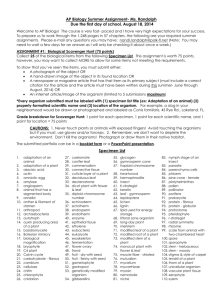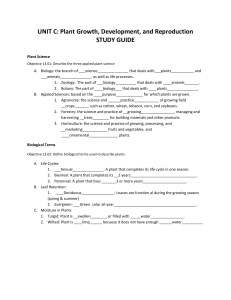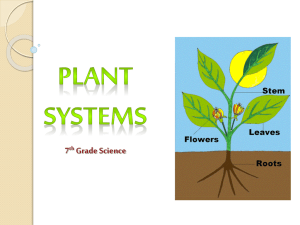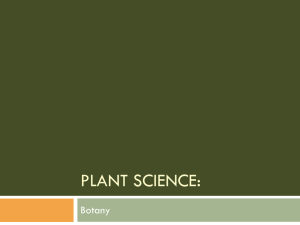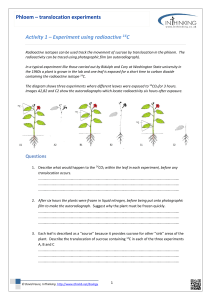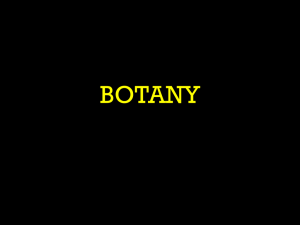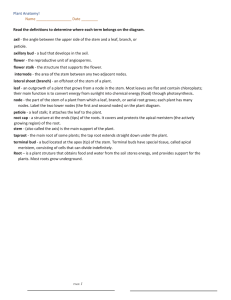ap biology extra credit opportunity #1
advertisement
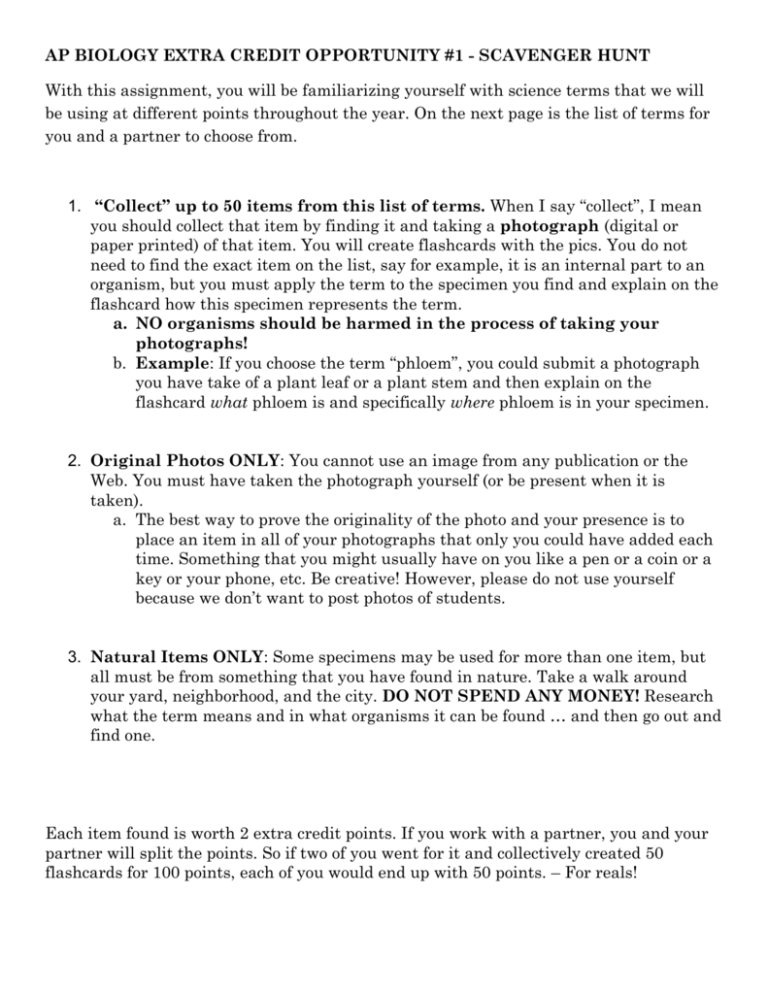
AP BIOLOGY EXTRA CREDIT OPPORTUNITY #1 - SCAVENGER HUNT With this assignment, you will be familiarizing yourself with science terms that we will be using at different points throughout the year. On the next page is the list of terms for you and a partner to choose from. 1. “Collect” up to 50 items from this list of terms. When I say “collect”, I mean you should collect that item by finding it and taking a photograph (digital or paper printed) of that item. You will create flashcards with the pics. You do not need to find the exact item on the list, say for example, it is an internal part to an organism, but you must apply the term to the specimen you find and explain on the flashcard how this specimen represents the term. a. NO organisms should be harmed in the process of taking your photographs! b. Example: If you choose the term “phloem”, you could submit a photograph you have take of a plant leaf or a plant stem and then explain on the flashcard what phloem is and specifically where phloem is in your specimen. 2. Original Photos ONLY: You cannot use an image from any publication or the Web. You must have taken the photograph yourself (or be present when it is taken). a. The best way to prove the originality of the photo and your presence is to place an item in all of your photographs that only you could have added each time. Something that you might usually have on you like a pen or a coin or a key or your phone, etc. Be creative! However, please do not use yourself because we don’t want to post photos of students. 3. Natural Items ONLY: Some specimens may be used for more than one item, but all must be from something that you have found in nature. Take a walk around your yard, neighborhood, and the city. DO NOT SPEND ANY MONEY! Research what the term means and in what organisms it can be found … and then go out and find one. Each item found is worth 2 extra credit points. If you work with a partner, you and your partner will split the points. So if two of you went for it and collectively created 50 flashcards for 100 points, each of you would end up with 50 points. – For reals! AP BIOLOGY SCAVENGER HUNT TERMS 1. 2. 3. 4. 5. 6. 7. 8. 9. 10. 11. 12. 13. 14. 15. 16. 17. 18. 19. 20. 21. 22. 23. 24. 25. 26. 27. 28. 29. 30. 31. 32. 33. 34. 35. 36. 37. 38. 39. 40. 41. 42. 43. 44. 45. 46. 47. 48. 49. 50. 51. 52. 53. 54. 55. 56. 57. 58. abscisic acid adaptation of an animal adaptation of a plant actin & myosin adhesion of water aggregate fruit amniotic egg anabolic analogous structures angiosperm annelid anther & filament of stamen apical growth archnid arthropod archaebacteria autotroph auxin producing area of a plant basidimycete biological magnification bryophyte C4 plant Calvin cycle carbohydrate cambium catabolic cellulose chitin climax community cnidarian coelomate cohesion of water conifer leaf modification commensalism connective tissue cuticle layer of a plant deciduous leaf decomposition denaturation deuterostome dicot plant with flower and leaf diploid chromosome number echinoderm ectotherm endosperm endotherm enzyme epithelial tissue ethylene eukaryote exoskeleton fermentation flower ovary frond fruit – dry with seed vs. fleshy with seed gametophyte gastropod genetically modified organism 59. gibberellins 60. glycogen 61. gymnosperms 62. haploid chromosome number 63. heartwood 64. hermaphrodite 65. homologous structures 66. K-strategist 67. keratin 68. kingdoms of classification 69. larval stage of an insect 70. leaf- gymnosperm 71. Lepidoptera 72. lichen 73. lignin 74. light reactions 75. littoral zone organism 76. long-day plant 77. meristem 78. mimicry 79. modified leaf of a plant 80. modified root of a plant 81. modified stem of a plant 82. monocot plant with flower and leaf 83. mutualism 84. mycelium 85. mycorrhizae 86. nematode 87. niche 88. nymph stage of an insect 89. parasite 90. parenchyma cells 91. phloem 92. pine cone – female 93. pioneer species 94. plasmolysis 95. platyhelminthes 96. pollen 97. pollinator 98. porifera 99. prokaryote 100. protosome 101. r-strategist 102. radial symmetry 103. rhizome 104. scale from an animal with a two-chambered heart 105. spore 106. sporophyte 107. stem – herbaceous vs. woody 108. stigma & style of carpel 109. stomata 110. succession 111. tendril of a plant 112. transpiration 113. vascular plant tissue 114. xerophyte 115. xylem Adapted from Kim Foglia’s Summer Assignment
